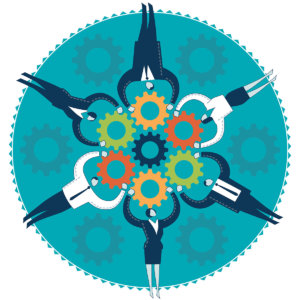Is Your Company Ready to Operate as a Market?
Traditional hierarchies are giving way to market forms of organizing that will recast the role of management.
Topics
Frontiers
Editor’s Note: This article is one of a special series of 14 commissioned essays MIT Sloan Management Review is publishing to celebrate the launch of our new Frontiers initiative. Each essay gives the author’s response to this question:
“Within the next five years, how will technology change the practice of management in a way we have not yet witnessed?”
New technologies are eroding transaction costs — and in the process creating a world that is increasingly connected. The resulting level of interdependence creates a radically new set of challenges for management.
In particular, complicated business situations are being replaced with complex ones. In a complicated system, even though there may be many inputs and outputs, one can predict the outcome by knowing how the system works. For instance, the global air travel system is complicated, and yet its unprecedented safety has been made possible by driving down the margin of error and correcting known defects. In a complex system, on the other hand, different parts can interact in ways that make predicting, and therefore controlling, the outcome nearly impossible. For instance, the interconnectedness of the global financial system means that events occurring in one part of the system have unexpected interactions with others, leading to unpredictable outcomes. As Janet L. Yellen, now chair of the U.S. Federal Reserve System, said in 2013, “Complex links among financial market participants and institutions are a hallmark of the modern global financial system. Across geographic and market boundaries, agents within the financial system engage in a diverse array of transactions and relationships that connect them to other participants.” Such interconnectedness was blamed for both the severity of the 2008 financial crisis and the difficulties encountered in resolving it.
Connecting parts of a system that used to be sealed off from one another can create enormous benefits. For instance, companies installing enterprise resource management (ERM) systems benefit from having different operations across silos able to share information. Companies using various electronic payment systems benefit from decreased costs of doing business. In a complex system, however, benefits for one set of players can create losses for others.
Consider, for instance, what shipping was like before the 1950s-era invention of the shipping container. It required tens of thousands of dockworkers to load and unload ships.

